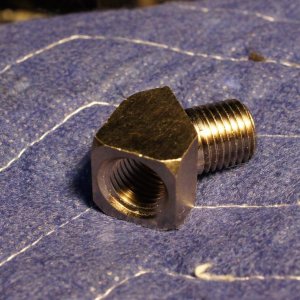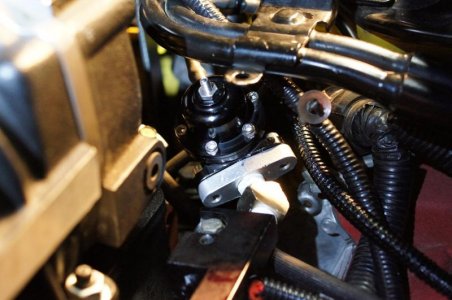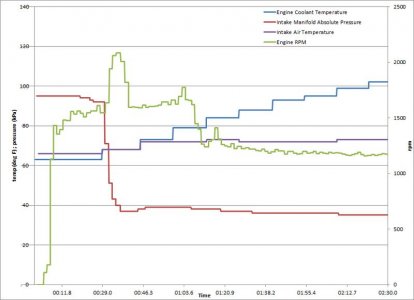I'm massively frustrated and hoping there is something I am missing.
My car is a 2000 (3.2L OBD2) with CTSC that has been on it since new. It has 40k miles. It has not been smooth; I will give my history:
<tbody>
</tbody>
So, the following are new in the last ~3k miles:
Is there something I am missing?
Since the car sometimes starts and runs perfectly and other times does not, and because this issue occurred with the original CTSC fueling setup, I do not think that simply pulling fuel from the F/IC map is the solution. It further seems that the map is close given the <10% fuel trims that that OBD2 system is applying.
Since the problem (at least until this morning) cleared once things warmed up a bit, it seems like it's related to something the ECM does during cold start.
The P0410 code from a few days ago seems like a red herring, as that system only affects the flow after the exhaust ports, so shouldn't cause poor engine running.
I checked the F/IC log and the factory MAP sensor follows the F/IC MAP sensor perfectly. Both indicate ~33.5 kPa (-20 inHg) at idle.
I ordered a used ignitor (ICM) from eBay to try. My CTSC has the ignitor under the intake/blower; does that really mean I need to pull the entire blower off to try a new ignitor?
Any other ideas? Please?
I have read many threads related to hesitation, misfire, cold start, etc.
http://www.nsxprime.com/forum/showthread.php/154609-Strong-hesitation-when-cold
http://www.nsxprime.com/forum/showthread.php/135300-Problem-at-startup!
http://www.nsxprime.com/forum/showthread.php/117313-What-could-be-causing-code-P1399
http://www.nsxprime.com/forum/showthread.php/145195-Igniter-unit
http://www.nsxprime.com/forum/showthread.php/184823-Another-random-misfire-thread
http://www.nsxprime.com/forum/showthread.php/162175-HELP!-Constant-misfire-getting-worse-daily
http://www.nsxprime.com/forum/showthread.php/172286-Mystery-motor-problem-code-P1399
http://www.nsxprime.com/forum/showthread.php/180877-Ya-think-that-I-m-running-rich
My car is a 2000 (3.2L OBD2) with CTSC that has been on it since new. It has 40k miles. It has not been smooth; I will give my history:
| June 2014 |
|
| Sept. 2014 |
|
| Nov. 2014 |
|
| Nov. 2014 - Feb. 2015 |
|
| March 2015 |
|
<tbody>
</tbody>
So, the following are new in the last ~3k miles:
- Fuel pump (Deatschwerks DW200)
- Fuel filter (OEM)
- Fuel lines
- Injectors (RC 550 cc/min) w/ AEM F/IC piggyback
- Battery
- Battery ground cable
- Ignition coils
- Spark plugs (currently Denso IK22 (heat range 7, 0.031" gap))
- TW sensor
- Valve clearance adjustment
Is there something I am missing?
Since the car sometimes starts and runs perfectly and other times does not, and because this issue occurred with the original CTSC fueling setup, I do not think that simply pulling fuel from the F/IC map is the solution. It further seems that the map is close given the <10% fuel trims that that OBD2 system is applying.
Since the problem (at least until this morning) cleared once things warmed up a bit, it seems like it's related to something the ECM does during cold start.
The P0410 code from a few days ago seems like a red herring, as that system only affects the flow after the exhaust ports, so shouldn't cause poor engine running.
I checked the F/IC log and the factory MAP sensor follows the F/IC MAP sensor perfectly. Both indicate ~33.5 kPa (-20 inHg) at idle.
I ordered a used ignitor (ICM) from eBay to try. My CTSC has the ignitor under the intake/blower; does that really mean I need to pull the entire blower off to try a new ignitor?
Any other ideas? Please?
I have read many threads related to hesitation, misfire, cold start, etc.
http://www.nsxprime.com/forum/showthread.php/154609-Strong-hesitation-when-cold
http://www.nsxprime.com/forum/showthread.php/135300-Problem-at-startup!
http://www.nsxprime.com/forum/showthread.php/117313-What-could-be-causing-code-P1399
http://www.nsxprime.com/forum/showthread.php/145195-Igniter-unit
http://www.nsxprime.com/forum/showthread.php/184823-Another-random-misfire-thread
http://www.nsxprime.com/forum/showthread.php/162175-HELP!-Constant-misfire-getting-worse-daily
http://www.nsxprime.com/forum/showthread.php/172286-Mystery-motor-problem-code-P1399
http://www.nsxprime.com/forum/showthread.php/180877-Ya-think-that-I-m-running-rich





